murathan
Was a Bassoonist
I like to make an introduction and opinions about Hohner Bravo and Amica series here. Because I m using them more than 10 years. I bought with my own money brand new both.
Hohner Bravo series are standard models (for beginners up to artist level) with a decent sound and very decent production quality. Although people argue about being made in China, I didnt see any problems with that. Every product is made in a Factory. Not in a country. Also they are shipped to Germany and quality controlled etc. and sent to markets. You cant buy brand new good quality instrument better than Hohner bravo and Weltmeister models in the same category with these prices. Yes this is not a high-end accordion such as Pigini, Scandalli etc. but they give you a good start owning a decent instrument brand new without a lot of investment. Why buy brand new. The same reasons why you buy a brand new car. I generally dont like the mold smell and scratches and dents in an instrument and I wanted to use myself only. Hohner (although sound is different, we can add Weltmeister here too) have a unique sound you cant beat in Folk music. A company established over 100 years. I know what elegant and good quality instrument looks like. You cant beat a bravo (a beginner accordion) in details of quality than that. With this, you will buy another Hohner which I did.
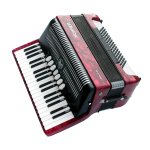
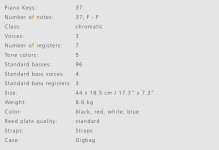
Hohner Amica series became Amica Forte today. I m not sure there is so much difference. Amica series are between artist models and beginner style accordions. High quality sound and production but not so professional. Professional accordions probably must have cassotto. This doesnt have. People argue about the low sound quality COMPARED TO other brands and models. But this is a relative viewpoint. Hohner brand always had a thin sound in treble and more bass, even in a HOHNER GOLA. Thats probably coming from being an harmonica company first or from Patent. You must consider that in a Hohner while buying and playing. That thin sound makes a softness and sincerity, heartiness, the grandpa sound, even Scandalli does not have to me. But you must appreciate and consider that. Maybe you want harder sound in your music, art is always relative. So you pay more for Amica models but not too much again. I think the company strategy of Hohner is giving a decent instrument to ordinary public as much as possible, not to sell an ultra model to an artist (which its possible in Gola models), like Ferrari to a collectioner. They want them to be played a lot.
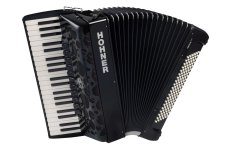
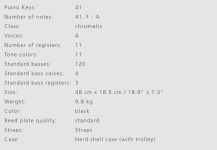
In a general overview, Hohner accordions are light, good sounded and enough to satisfy your every need with a good budget price. I made this post because I really support Hohner accordions by owning, after over 11 years. I dont think I will do that again in a Scandalli or a Weltmeister if I own them. Hohner really have something special.
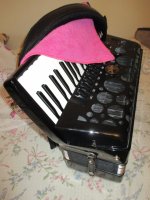
Hohner Bravo series are standard models (for beginners up to artist level) with a decent sound and very decent production quality. Although people argue about being made in China, I didnt see any problems with that. Every product is made in a Factory. Not in a country. Also they are shipped to Germany and quality controlled etc. and sent to markets. You cant buy brand new good quality instrument better than Hohner bravo and Weltmeister models in the same category with these prices. Yes this is not a high-end accordion such as Pigini, Scandalli etc. but they give you a good start owning a decent instrument brand new without a lot of investment. Why buy brand new. The same reasons why you buy a brand new car. I generally dont like the mold smell and scratches and dents in an instrument and I wanted to use myself only. Hohner (although sound is different, we can add Weltmeister here too) have a unique sound you cant beat in Folk music. A company established over 100 years. I know what elegant and good quality instrument looks like. You cant beat a bravo (a beginner accordion) in details of quality than that. With this, you will buy another Hohner which I did.


Hohner Amica series became Amica Forte today. I m not sure there is so much difference. Amica series are between artist models and beginner style accordions. High quality sound and production but not so professional. Professional accordions probably must have cassotto. This doesnt have. People argue about the low sound quality COMPARED TO other brands and models. But this is a relative viewpoint. Hohner brand always had a thin sound in treble and more bass, even in a HOHNER GOLA. Thats probably coming from being an harmonica company first or from Patent. You must consider that in a Hohner while buying and playing. That thin sound makes a softness and sincerity, heartiness, the grandpa sound, even Scandalli does not have to me. But you must appreciate and consider that. Maybe you want harder sound in your music, art is always relative. So you pay more for Amica models but not too much again. I think the company strategy of Hohner is giving a decent instrument to ordinary public as much as possible, not to sell an ultra model to an artist (which its possible in Gola models), like Ferrari to a collectioner. They want them to be played a lot.


In a general overview, Hohner accordions are light, good sounded and enough to satisfy your every need with a good budget price. I made this post because I really support Hohner accordions by owning, after over 11 years. I dont think I will do that again in a Scandalli or a Weltmeister if I own them. Hohner really have something special.

Last edited:
